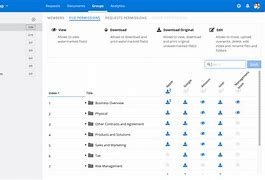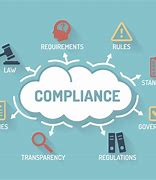
- Virtual Data Rooms vs. Traditional File Sharing: Which Wins?
- What is a Virtual Data Room?
- How Virtual Data Rooms Work
- Secure Access and Permissions
- Version Control
- Audit Trails
- Document Management
- What is Traditional File Sharing?
- How Traditional File Sharing Works
- Email Attachments
- Cloud Storage Platforms (Dropbox, Google Drive)
- File Transfer Protocol (FTP)
- Shared Network Drives
- Virtual Data Rooms vs. Traditional File Sharing: Key Differences
- Security: Virtual Data Rooms are the Secure Choice
- Data Encryption
- Two-Factor Authentication
- Watermarking
- Access Control
- Collaboration: Virtual Data Rooms Encourage Seamless Team Work
- Real-Time Collaboration
- Document Annotation
- Discussion Forums
- Compliance: Virtual Data Rooms are Built for Compliance
- Industry-Specific Standards (HIPAA, GDPR)
- Audit Trails
- Watermarking
- Data Retention Policies
- Cost: Virtual Data Rooms vs. Traditional File Sharing
- Virtual Data Room Cost Considerations
- Traditional File Sharing Cost Considerations
- Factors Influencing Cost
- Virtual Data Room Use Cases: When to Use a Virtual Data Room
- Mergers and Acquisitions (M&A)
- Due Diligence
- Fundraising
- Intellectual Property Management
- Choosing the Right Solution for You
- Project Size
- Security Requirements
- Collaboration Needs
- Budget
- Conclusion: Virtual Data Rooms Offer Superior Security, Collaboration, and Compliance for Sensitive Information.

In today’s digital landscape, sharing and securing sensitive data has become paramount for businesses, especially during due diligence, mergers, and acquisitions. Traditional file sharing methods have been around for ages, offering basic functionalities. But, with the evolving need for robust data management, Virtual Data Rooms (VDRs) have emerged as a powerful alternative. So, which method takes the crown – VDRs or traditional file sharing?
The answer is far from simple and depends heavily on your specific needs and circumstances. Let’s break down the pros & cons to see which platform reigns supreme for your situation.
Traditional file sharing services, like Dropbox or Google Drive, offer easy access to files from anywhere with internet connectivity. They are a user-friendly option for basic needs, especially when it comes to collaboration among team members. The simplicity & ease of access can make these platforms a good choice for basic project collaboration. However, when dealing with confidential information during M&A transactions, legal discovery, or any scenario where data security is paramount, the limitations of traditional file sharing platforms become apparent.
VDRs, on the other hand, are specifically designed with robust security features to handle high-stakes scenarios. They offer a secure & controlled environment for sharing, viewing, and managing sensitive information, making them ideal for due diligence, legal matters, or other scenarios demanding tight data controls. VDRs excel in providing audit trails, granular permissions, and detailed activity logs, offering unparalleled security & compliance capabilities, ultimately contributing to a more secure and seamless transaction.
Virtual Data Rooms vs. Traditional File Sharing: Which Wins?
In today’s digital landscape, sharing sensitive information securely and efficiently is paramount, especially in situations involving mergers and acquisitions (M&A), due diligence, or intellectual property management. Two popular options emerge: virtual data rooms (VDRs) and traditional file sharing methods. But which option reigns supreme? Let’s delve into the intricacies of each approach to determine the victor.
What is a Virtual Data Room?
A virtual data room (VDR) is a secure online platform designed for storing, sharing, and managing confidential documents. VDRs are widely adopted for various business processes, particularly where sensitive data is involved.
How Virtual Data Rooms Work
VDRs function by providing a centralized repository for all pertinent documents. Users can access the VDR through a web interface, granting them the ability to upload, download, view, and manage files.
Secure Access and Permissions
A key attribute of VDRs is the ability to control access and permissions. Administrators can set granular permissions, determining who can view, edit, or download specific documents. This granular control ensures that sensitive information remains protected and only authorized personnel can access it.
Version Control
VDRs offer robust version control functionalities. Whenever a document is updated, the platform creates a new version, preserving previous iterations for reference. This attribute is crucial for tracking changes and ensuring that everyone is working with the latest information.
Audit Trails
To maintain accountability and compliance, VDRs generate detailed audit trails. These trails record all activities within the VDR, including user logins, document accesses, and modifications. This information can be invaluable for demonstrating compliance with regulatory requirements.
Document Management
VDRs offer thorough document management capabilities. Users can organize documents into folders, tag them with search terms, and perform full-text searches to easily locate specific files.
What is Traditional File Sharing?
Traditional file sharing encompasses various methods for distributing digital files, ranging from simple email attachments to more complex cloud storage platforms and file transfer protocols.
How Traditional File Sharing Works
Traditional file sharing methods often rely on sending files via email, using cloud storage platforms like Dropbox or Google Drive, leveraging File Transfer Protocol (FTP), or sharing files through shared network drives.
Email Attachments
The simplest method is to send files as attachments within emails. While convenient, this method lacks security and control over file access.
Cloud Storage Platforms (Dropbox, Google Drive)
Cloud storage platforms offer centralized storage and sharing functionalities. However, these platforms lack granular access controls and may not offer the same level of security as VDRs.
File Transfer Protocol (FTP)
FTP is a protocol specifically designed for file transfers. While FTP can be secure, it requires technical expertise and may not be suitable for all use cases.
Shared Network Drives
Shared network drives allow multiple users to access and modify files stored on a central server. This method offers a degree of convenience but lacks security and access control attributes.
Virtual Data Rooms vs. Traditional File Sharing: Key Differences
When comparing VDRs and traditional file sharing, several key distinctions arise. These differences determine which solution is more suitable for specific situations.
Security: Virtual Data Rooms are the Secure Choice
VDRs are specifically designed to prioritize data security. Unlike traditional file sharing methods, VDRs employ robust security measures to protect sensitive information.
Data Encryption
VDRs encrypt data both in transit and at rest. This means that data is encrypted while being transferred between users and while stored on the VDR server. This encryption makes it virtually impossible for unauthorized individuals to access or decipher the information.
Two-Factor Authentication
VDRs often implement two-factor authentication, requiring users to offer two forms of identification before gaining access. This layer of protection significantly reduces the risk of unauthorized access.
Watermarking
Many VDRs offer watermarking capabilities. This attribute embeds a unique identifier within documents, allowing administrators to track the distribution and application of files.
Access Control
VDRs offer granular access control mechanisms. Administrators can set specific permissions for each user, determining who can view, download, edit, or print specific documents. This ensures that sensitive information remains protected and only authorized individuals can access it.
Collaboration: Virtual Data Rooms Encourage Seamless Team Work
VDRs go beyond secure file sharing by facilitating seamless collaboration among team members. They offer attributes that streamline communication and teamwork, enhancing productivity.
Real-Time Collaboration
VDRs enable real-time collaboration on documents. Multiple users can access and edit documents simultaneously, facilitating efficient communication and ensuring that everyone is working with the latest information.
Document Annotation
VDRs often offer document annotation tools, allowing users to highlight, comment, and add notes directly within documents. This facilitates clear communication and ensures that everyone is aligned on crucial details.
Discussion Forums
Some VDRs include discussion forums, enabling users to engage in focused conversations related to specific documents. These forums foster collaboration and facilitate efficient communication among team members.
Compliance: Virtual Data Rooms are Built for Compliance
VDRs are designed with compliance in mind. They incorporate attributes that ensure adherence to industry-specific standards and regulatory requirements.
Industry-Specific Standards (HIPAA, GDPR)
VDRs often comply with industry-specific standards such as HIPAA (Health Insurance Portability and Accountability Act) for healthcare organizations and GDPR (General Data Protection Regulation) for organizations handling personal data in the European Union. This compliance ensures that sensitive information is handled according to strict regulations.
Audit Trails
As mentioned earlier, VDRs maintain thorough audit trails, recording all user activities within the platform. These trails offer irrefutable evidence of user actions, which can be invaluable for demonstrating compliance with regulations.
Watermarking
Watermarking capabilities help track the distribution and application of sensitive documents. This functionality ensures that organizations can demonstrate compliance with regulations and maintain control over the flow of information.
Data Retention Policies
VDRs typically adhere to data retention policies, ensuring that data is stored and managed in accordance with regulatory requirements.
Cost: Virtual Data Rooms vs. Traditional File Sharing
While VDRs offer superior security, collaboration, and compliance benefits, they often come with a higher price tag compared to traditional file sharing methods. It’s crucial to consider the cost implications of each option.
Virtual Data Room Cost Considerations
VDRs typically charge based on a paid access model, with pricing varying depending on the size of the data room, the duration of the paid access, and the attributes included. Some VDRs may offer additional attributes for an extra cost, such as advanced reporting capabilities or dedicated customer support.
Traditional File Sharing Cost Considerations
Traditional file sharing methods can be cost-effective, especially for small projects with limited security requirements. However, the costs associated with traditional file sharing can quickly escalate as the volume of data boosts, particularly if security and compliance requirements are stringent.
Factors Influencing Cost
Factors influencing the cost of both VDRs and traditional file sharing methods include the volume of data, the number of users, the duration of the project, and the level of security and compliance required.
Virtual Data Room Use Cases: When to Use a Virtual Data Room
VDRs are particularly suitable for situations involving sensitive information, requiring robust security, collaboration, and compliance functionalities. Here are some common use cases for VDRs:
Mergers and Acquisitions (M&A)
VDRs are widely used during M&A transactions. They allow companies to securely share confidential information with potential buyers, ensuring due diligence can be conducted effectively.
Due Diligence
VDRs offer a secure platform for conducting due diligence during M&A transactions, legal disputes, or other business negotiations. They enable parties to access and review pertinent documents securely and efficiently.
Fundraising
VDRs can be used to securely share confidential information with potential investors during fundraising rounds. They facilitate the due diligence process and ensure that sensitive information is only accessible to authorized parties.
Intellectual Property Management
VDRs are ideal for managing intellectual property. They offer a secure repository for storing and sharing patents, trademarks, and other intellectual property documents.
Choosing the Right Solution for You
Choosing between a VDR and traditional file sharing depends on various factors, including project size, security requirements, collaboration needs, and budget.
Project Size
For small projects with limited data volumes and minimal security concerns, traditional file sharing methods may be sufficient. However, for larger projects involving sensitive information, VDRs offer superior security and collaboration capabilities.
Security Requirements
If security is a top priority, VDRs are the clear choice. They offer robust security measures, including encryption, two-factor authentication, and access control, to protect sensitive information.
Collaboration Needs
If collaboration is crucial, VDRs offer a platform for seamless teamwork. They offer attributes such as real-time collaboration, document annotation, and discussion forums, facilitating efficient communication and productivity.
Budget
VDRs can be more expensive than traditional file sharing methods. However, the boostd security, collaboration, and compliance benefits they offer may outweigh the additional cost, especially for projects involving sensitive information.
Conclusion: Virtual Data Rooms Offer Superior Security, Collaboration, and Compliance for Sensitive Information.
In the battle between VDRs and traditional file sharing, VDRs emerge as the winner for projects involving sensitive information. They offer superior security, collaboration, and compliance attributes, making them the ideal choice for situations requiring robust data protection and efficient teamwork. While traditional file sharing methods may be cost-effective for smaller projects with limited security requirements, VDRs offer a thorough solution for sensitive information sharing and management.





























